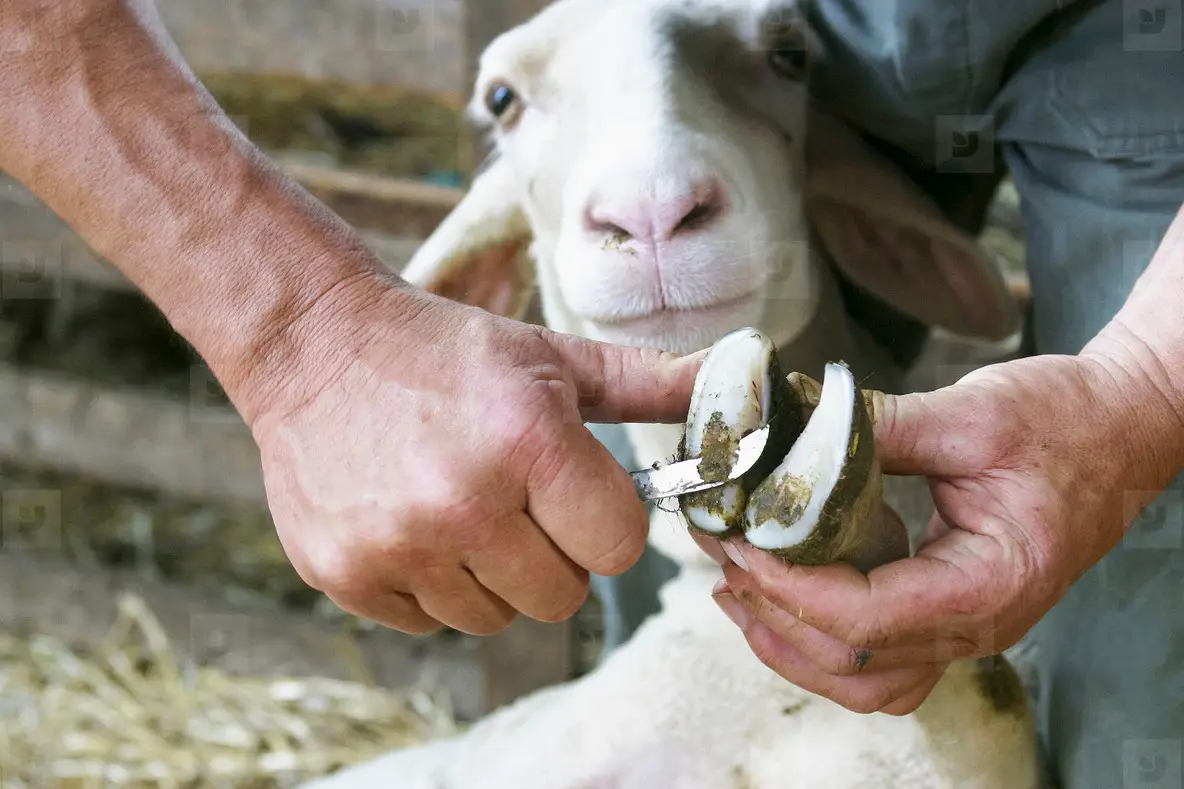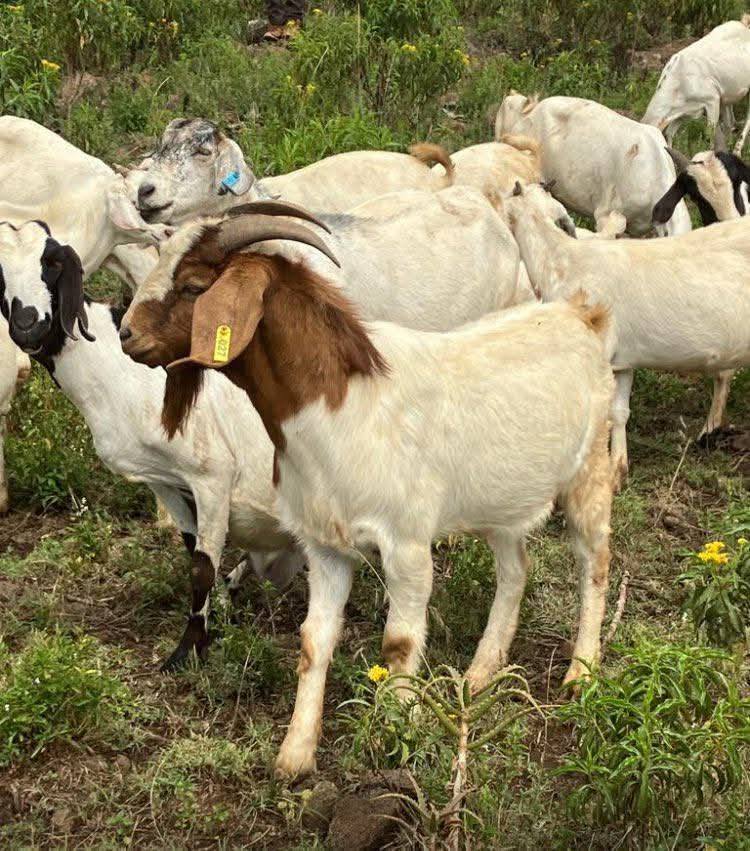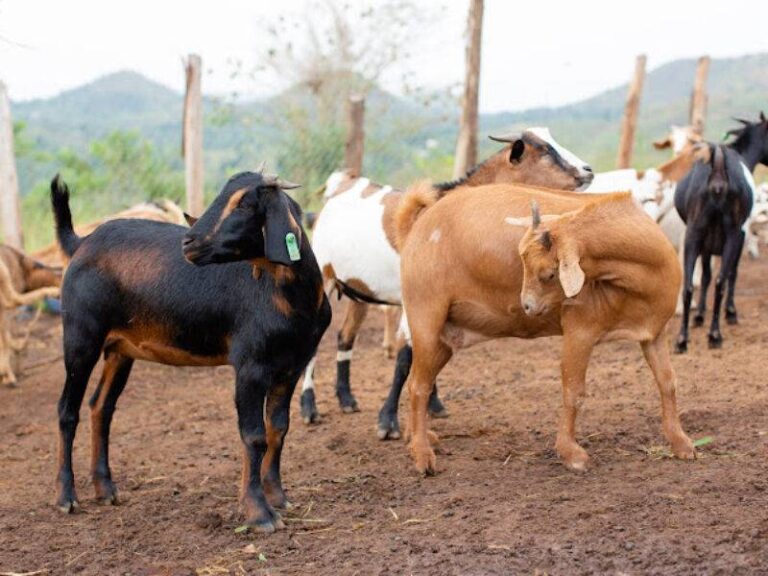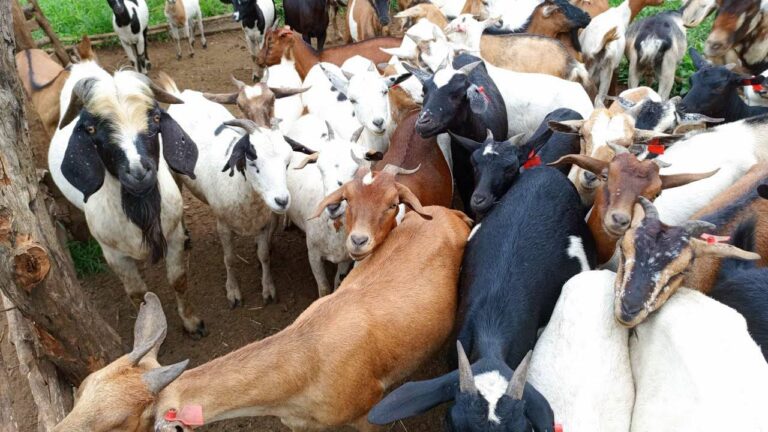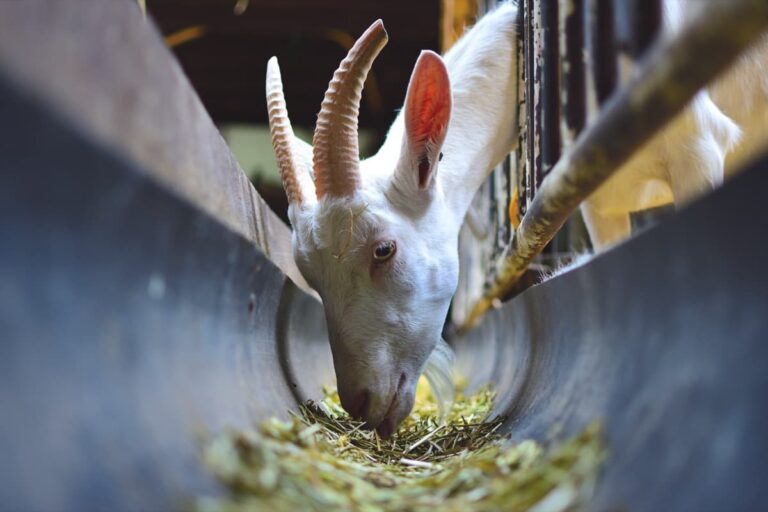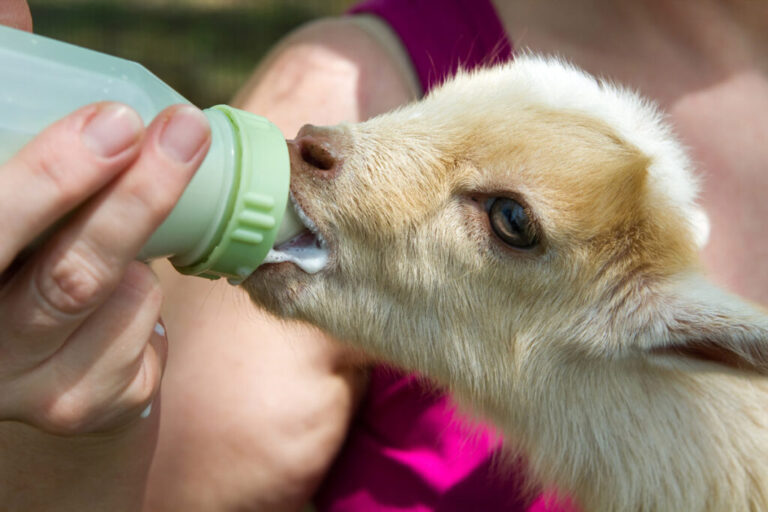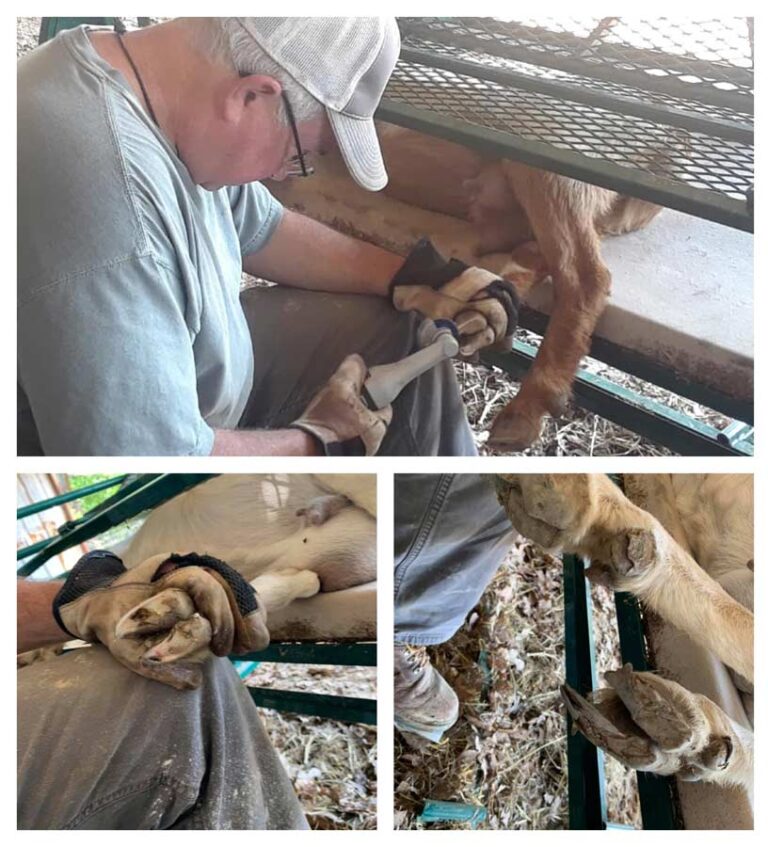Proper hoof care can make or break a goat herd’s health and productivity. In Australia, where our diverse climates can challenge even the hardiest animals, finding reliable goat hoof trimming services is essential for maintaining sound livestock.
Goat hoof trimming isn’t just a routine task; it’s a critical practice that prevents lameness, infections, and reduced yields in meat, dairy, or fiber production.
Effective hoof management aligns with global standards for animal welfare, ensuring goats remain mobile and free from pain that could compromise their overall well-being.
In my years farming Boer and dairy goats across New South Wales and Queensland, I’ve learned that partnering with skilled professionals can save time, reduce stress on the animals, and ultimately boost farm efficiency.
This guide draws from my practical experiences and verified industry insights to help you navigate the process, whether you’re a beginner or an intermediate farmer looking to optimize your operations.
Goat hoof trimming involves carefully removing excess growth from the cloven hooves to keep them level and functional, typically every 6 to 8 weeks depending on terrain and diet.
Reliable services in Australia ensure this is done safely, minimizing risks like infections that affect up to 20% of herds in wetter areas, as noted by Meat & Livestock Australia (MLA).
When you choose certified providers, you not only protect your goats but also comply with biosecurity standards that support sustainable farming practices worldwide.
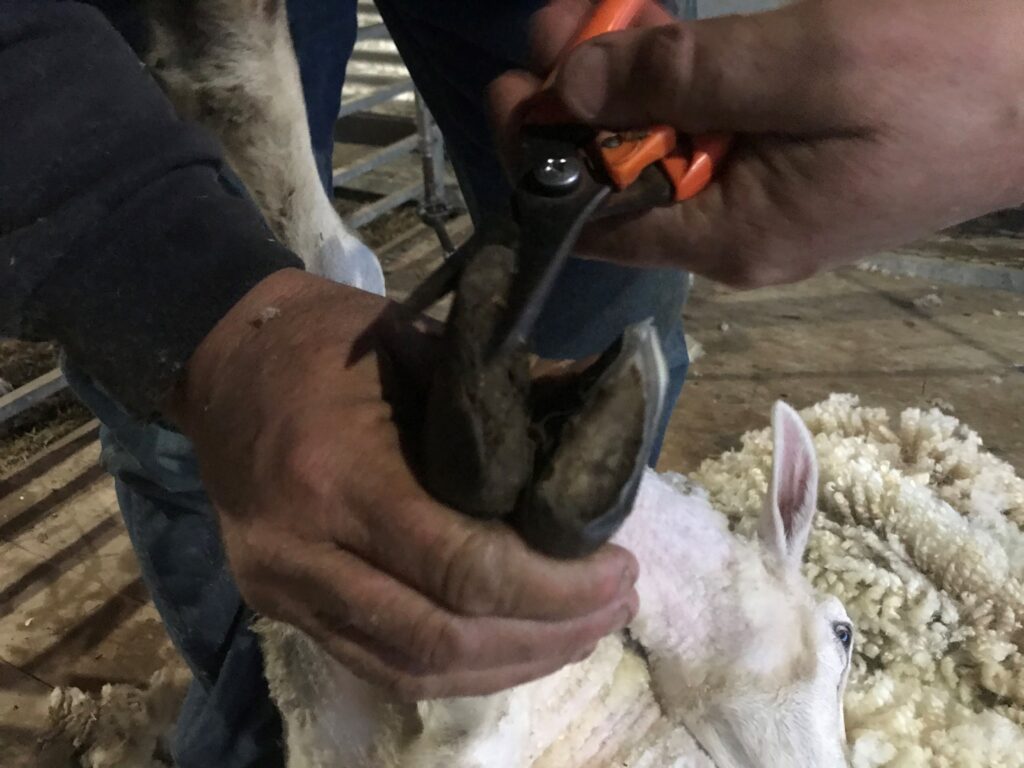
Importance of Goat Hoof Trimming in Australian Farming
In my early days as a farmer, I underestimated how vital goat hoof trimming was until a wet season in the Hunter Valley led to widespread lameness in my herd, costing me weeks of lost productivity and veterinary bills.
Goats’ hooves grow continuously, much like human nails, but unlike wild counterparts that naturally wear them down on rocky terrain, domesticated ones in paddocks or barns often overgrow, leading to imbalance and pain.
Regular trimming supports animal health by preventing issues like foot rot, which thrives in Australia’s variable climates. For instance, in semi-arid regions like outback Queensland, dry conditions might slow growth, but sudden rains can soften hooves, inviting bacterial infections.
This practice directly impacts your farm’s bottom line. Healthy hooves mean better mobility, allowing goats to graze efficiently and maintain weight; key for meat production where Boer goats can yield up to 50% more if lameness is avoided.
In dairy systems, similar to those I’ve managed with Saanen breeds, poor hoof care reduces milk output by stressing the animals, as per guidelines from the Australian Dairy Goat Society.
From an environmental standpoint, well-maintained herds contribute to sustainable land use by preventing overgrazing in vulnerable areas.
Transitioning to professional services ensures consistency, especially when comparing free-range setups, where natural wear is uneven, to intensive systems that demand precise interventions to avoid joint strain.
Overlooking hoof health can escalate minor issues into major ones, but with informed choices, Australian farmers can turn this into an opportunity for resilient operations.
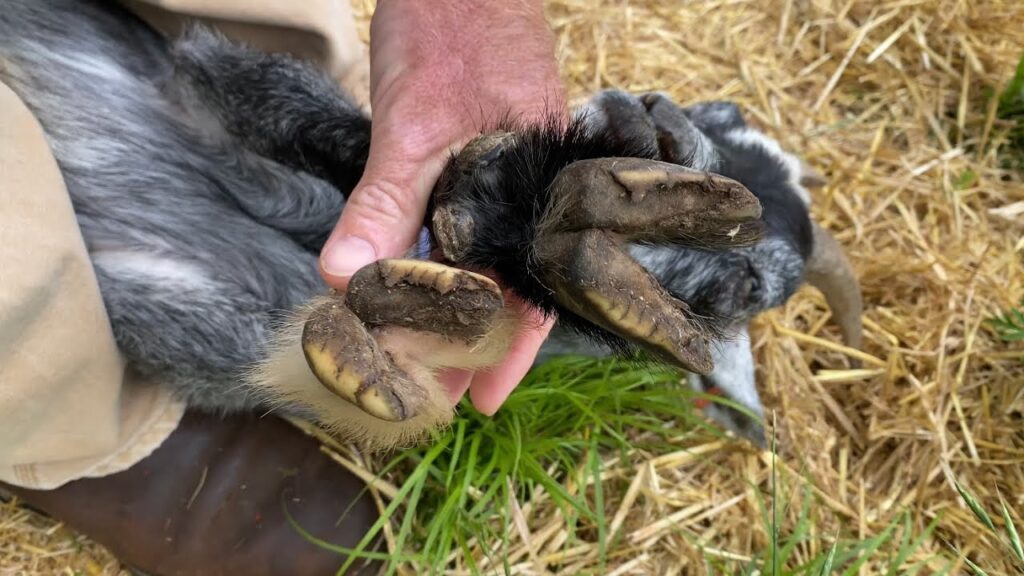
Common Goat Hoof Problems in Australia and How to Spot Them Early
Drawing from my experiences during droughts in central Australia, where cracked hooves were rampant, I’ve learned that early detection is key to avoiding costly treatments.
One prevalent issue is hoof overgrowth, where excess keratin curls like “elf shoes,” causing goats to walk awkwardly and strain their pasterns—I’ve seen this reduce daily forage intake by 20% in affected animals.
In wetter southeastern states, foot scald emerges as interdigital dermatitis from Fusobacterium necrophorum bacteria, thriving in muddy conditions around water troughs; it presents as red, inflamed skin between toes, often progressing to painful lameness if ignored.
Hoof rot, a step further, involves Dichelobacter nodosus breaking down hoof walls, leading to a foul odor and separation of the sole; common in mixed sheep-goat operations I’ve consulted on, where cross-contamination occurs. Such infections can spread rapidly in humid climates.
Abscesses, from punctures on rocky terrains like those in the Flinders Ranges, cause sudden swelling and heat, while laminitis (linked to high-grain diets) results in throbbing pain and reluctance to move, as evidenced by my own herd after a feed mix-up.
These can be spotted through weekly visual inspections for cracks, odor, or gait changes. Spotting these early allows timely intervention, preserving your goats’ vitality and farm sustainability.
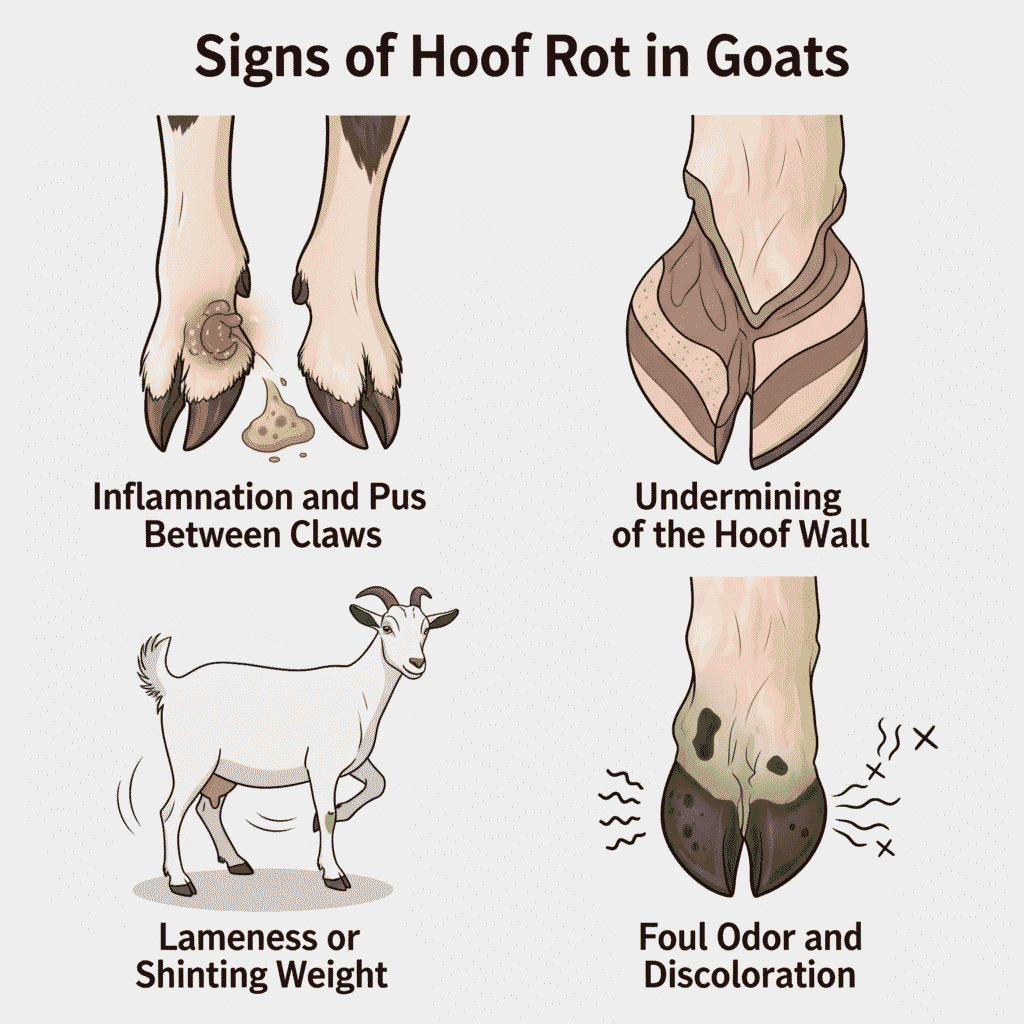
What to Look for in Reliable Goat Hoof Trimming Services
When I first sought professional help for my expanding herd in rural Victoria, I prioritized services with proven expertise, and it paid off in healthier animals year-round.
Reliable goat hoof trimming services in Australia should demonstrate deep knowledge of caprine anatomy, ensuring trims level the hoof wall to the sole without cutting into sensitive quick tissue, which could cause bleeding or infection.
Look for providers certified under programs like the Australian Livestock Production Assurance (LPA), which verifies biosecurity compliance.
In my consultations, I’ve found that experienced trimmers, often with veterinary ties, use tools like sharp shears or rasps tailored for goats, avoiding generic equipment that risks injury.
Safety is paramount; services must employ restraint methods, such as milking stands, to minimize stress, aligning with FAO guidelines on humane handling that reduce cortisol levels and improve long-term health.
Check for insurance and references from fellow farmers via networks like the Goat Industry Council of Australia (GICA), where I’ve connected with trusted locals.
Cost-effectiveness matters too. Reputable services charge around AUD 10-20 per goat plus travel, but bulk rates for herds over 10 can lower it, as I’ve negotiated for my operations.
Comparing free-range versus intensive needs, services should adapt: rocky paddock goats might need less frequent visits than barn-raised ones prone to rapid growth from nutrient-rich feeds.
The best services foster ongoing advice, like diet tweaks for hoof strength, turning a one-off trim into a partnership for your farm’s success.
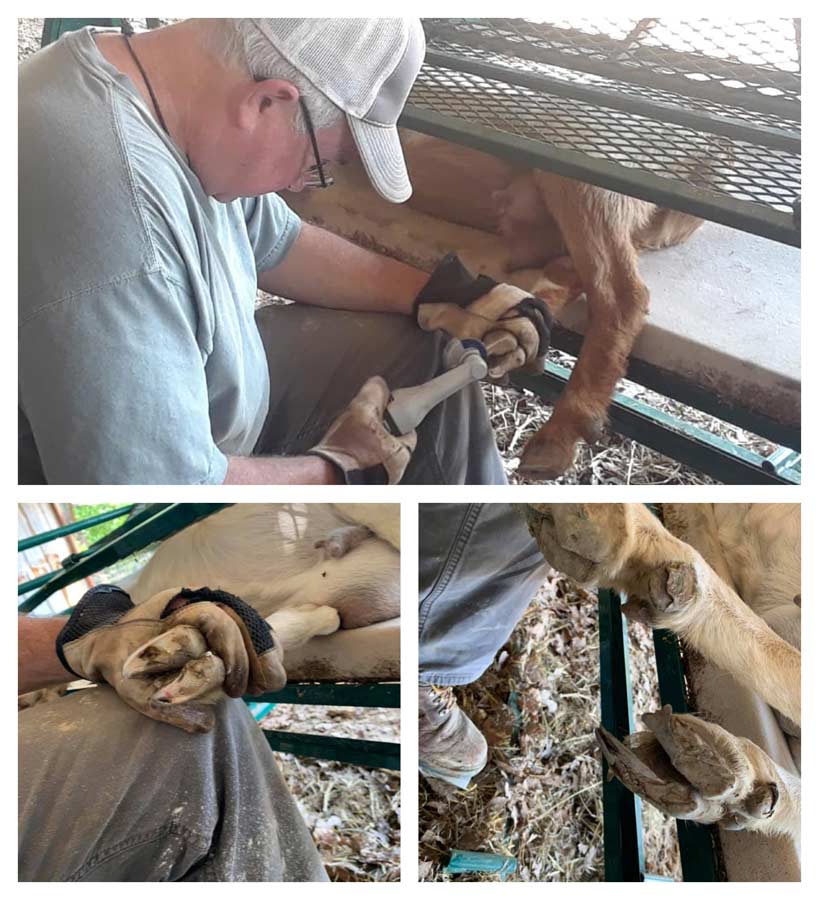
Step-by-Step Guide to Finding Goat Hoof Trimming Services Near You
Starting my search for reliable help years ago in Queensland’s outback, I began with local networks, and it’s a method that still serves me well today.
First, tap into industry associations like GICA or state-specific groups such as the New South Wales Farmers’ Association, which often list vetted providers.
I’ve found gems this way that understand Australia’s regional challenges, from dusty interiors to rainy coasts.
Online directories on platforms like Gumtree or agricultural forums yield quick leads, but verify credentials by asking for LPA accreditation, ensuring they meet national biosecurity standards as per MLA recommendations.
Next, request quotes and references; in my experience, a service quoting AUD 15 per head for a small herd, with proof of past work, signals professionalism.
Visit their base if possible to assess hygiene; clean tools prevent cross-contamination, vital in preventing foot rot outbreaks I’ve witnessed in mixed farms.
For rural areas, mobile services with travel fees (around AUD 0.50/km) are ideal, but compare urban versus remote costs; city-based trimmers might charge more but offer faster response. In free-range setups, seek those experienced in terrain-adapted trims, unlike intensive systems needing precise, frequent care.
Follow up with a trial visit, observing their technique against WOAH welfare benchmarks, to build a long-term alliance that supports your goats’ health.
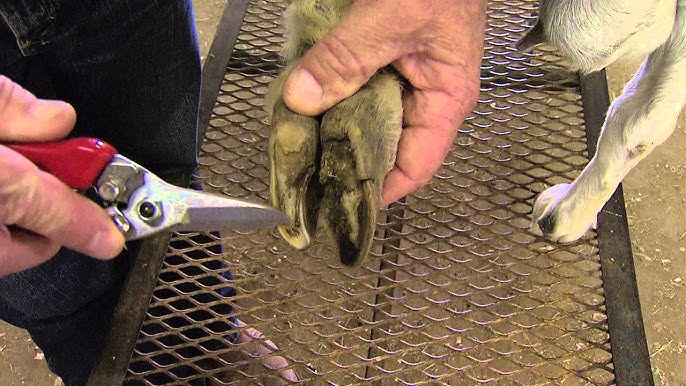
Certifications and Standards for Professional Goat Hoof Trimmers
Certifications have been a game-changer in my farming network. In Australia, look for trimmers aligned with the National Livestock Identification System (NLIS), which mandates traceability and biosecurity.
LPA accreditation, administered by Integrity Systems Company, verifies on-farm practices including hoof care, and I’ve relied on such certified pros to comply with export standards for my Boer meat goats.
WOAH’s Terrestrial Animal Health Code emphasizes welfare in handling, so providers trained in these international standards excel at low-stress trims, reducing injury risks.
For specialized services, check for affiliations with GICA, which promotes best practices in goat health, including hoof management to combat issues like scald in humid tropics.
Comparing certifications, LPA suits broad livestock operations, while WOAH-focused ones ensure global alignment for ethical farming.
In my advisory role, I’ve seen uncertified trimmers cause more harm than good, underscoring the value of verified expertise.
Opting for certified services not only protects your herd but elevates your farm’s reputation in sustainable practices.
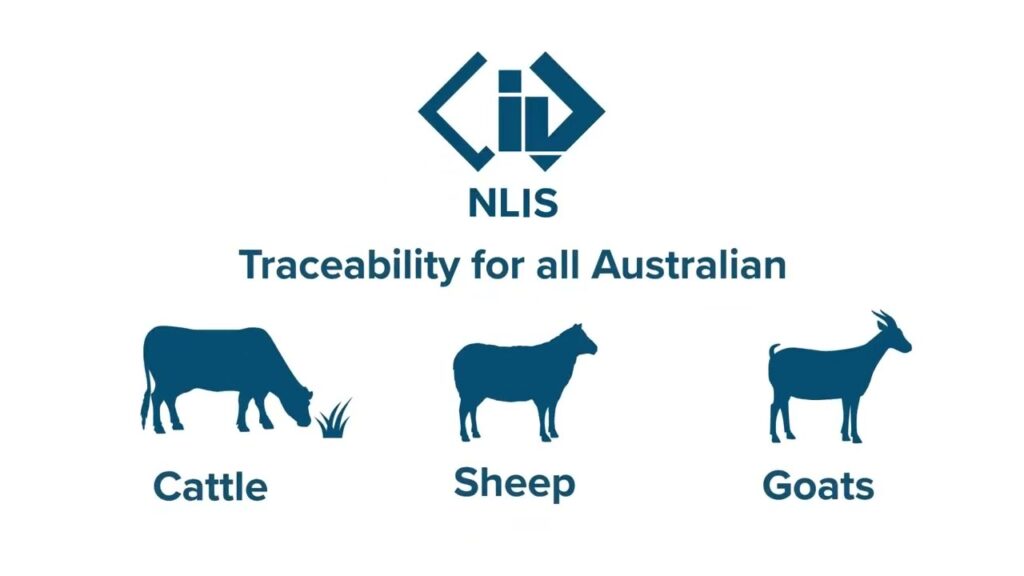
Questions to Ask Potential Goat Hoof Trimming Providers
When interviewing providers for my dairy herd, targeted questions revealed their suitability quickly.
Start by inquiring about experience with Australian goat breeds like Boer or Saanen.
Have they handled overgrowth from lush pastures versus arid wear?
Ask for details on their trimming technique: Do they follow FAO-recommended methods, leveling walls parallel to the coronary band to prevent lameness?
Inquire about tools and hygiene: Do they use sterilized shears and offer post-trim disinfectants to avert rot?
Discuss frequency and costs: For a 20-goat herd, what’s the rate (around AUD 12-18 each), including travel?
Probe biosecurity measures: Do they quarantine tools between farms to align with DAFF standards?
Finally, request references and follow-up plans; in free-range versus intensive comparisons, reliable ones adapt schedules, like bi-monthly in wet areas.
These queries, honed from my educational workshops, ensure a match that bolsters your operation’s health.
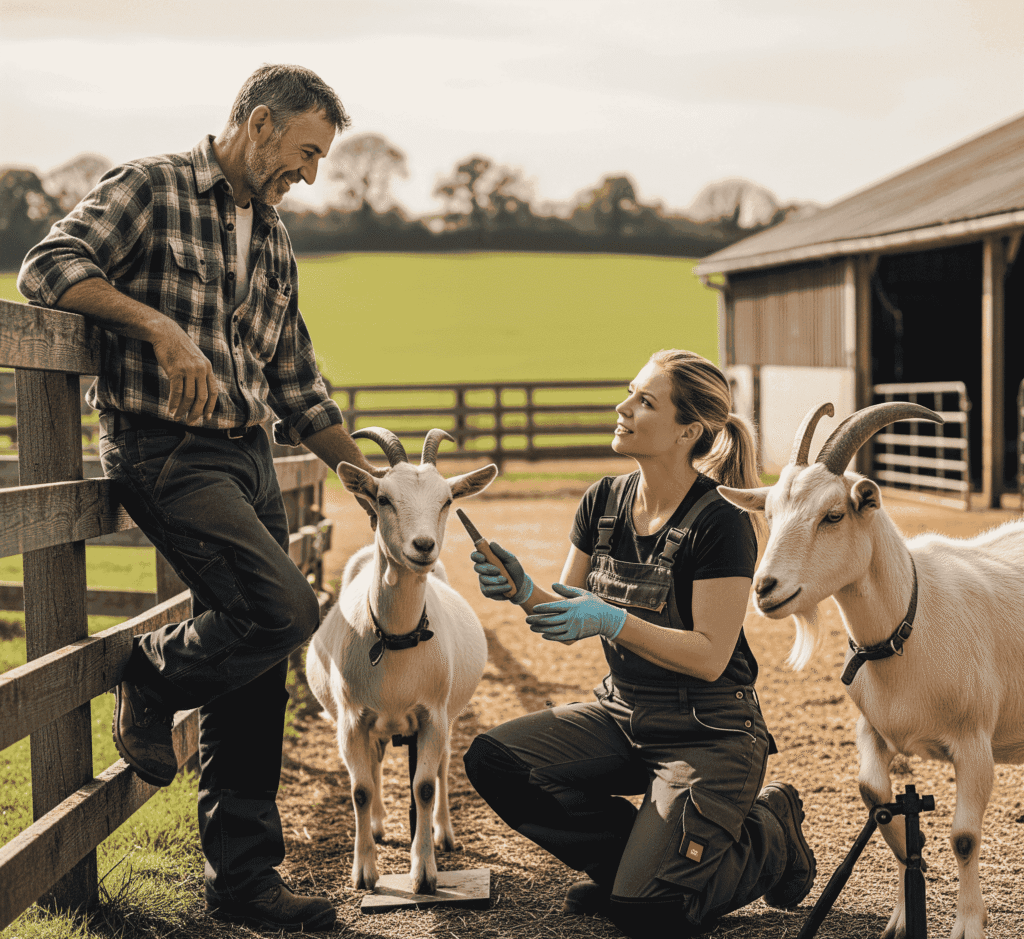
The Benefits of Regular Professional Goat Hoof Trimming
Regular professional care transformed my herd’s vitality during a challenging season in South Australia’s arid zones, where uneven terrain amplified issues. Consistent trimming maintains balance, reducing joint stress and boosting mobility; I’ve noted better weight gains in treated goats. It prevents infections like scald, common in coastal rains, by exposing healthy tissue.
Economically, it cuts vet costs; a single rot outbreak can expense thousands, but pros prevent this.
Environmentally, healthy goats graze sustainably, minimizing overbrowsing in range lands.
Comparing systems, intensive farms see faster returns from scheduled trims, while free-range ones benefit from adaptive services.
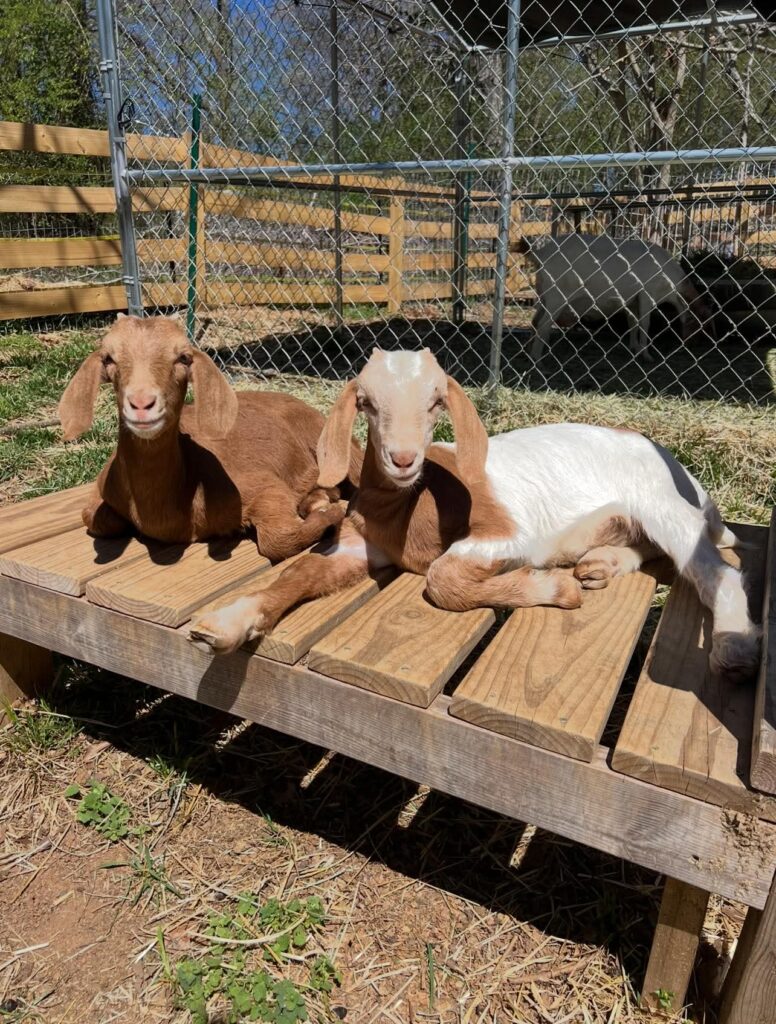
How to Maintain Your Goats’ Hooves Between Professional Trims
Even with pros, daily vigilance keeps issues at bay, as I do on my mixed farm.
Monitor gait weekly for limps, trimming minor overgrowth yourself with basic shears every 4-6 weeks to complement services.
Provide rocky areas for natural wear, reducing professional needs in free-range setups versus soft-bedded intensive ones.
Nutrition matters. Zinc-rich minerals strengthen hooves.
Keep paddocks dry to avoid scald, rotating pastures.
These habits extend pro visits’ efficacy, saving costs and upholding health.
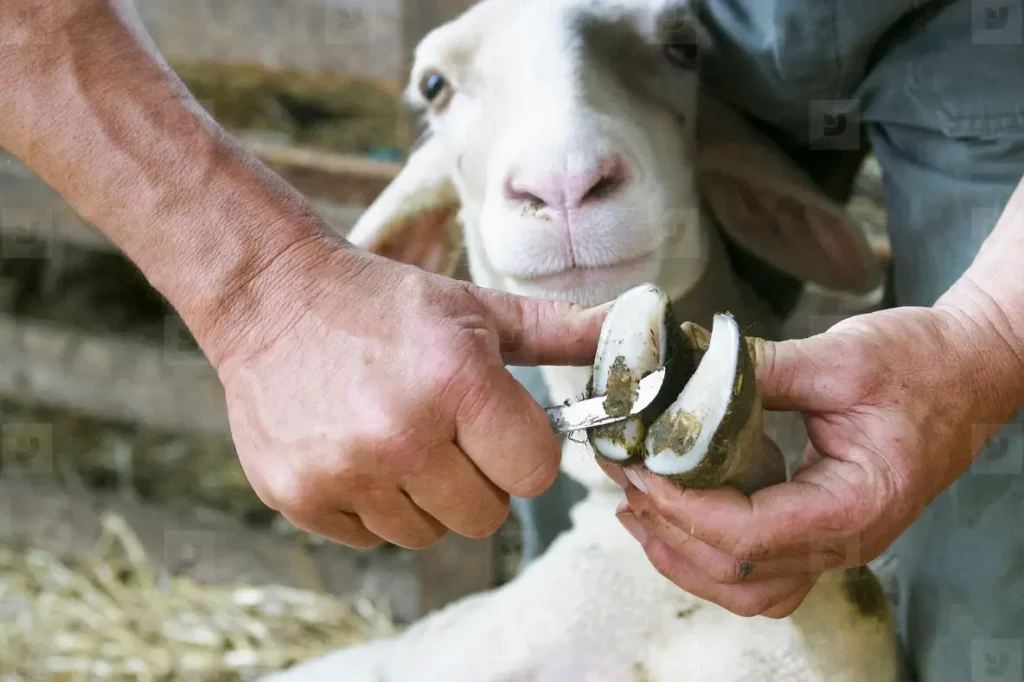
Costs and Budgeting for Goat Hoof Trimming Services
Budgeting wisely has kept my operations viable amid fluctuating markets.
Expect AUD 10-25 per goat, plus AUD 50-100 travel for remote areas. Bulk herds drop to AUD 8-15 each, as I’ve negotiated.
Annual costs for 50 goats might total AUD 1,000-2,000, offset by prevented losses; MLA estimates lameness costs AUD 200 per case.
Factor certifications adding 10-20% premium for quality. In intensive systems, frequent trims raise expenses, but free-range natural wear lowers them.
Plan quarterly, aligning with seasons. Wetter times demand more.
My advice: View it as investment that will yield healthier, profitable herds.
Wrapping Up
Securing reliable goat hoof trimming services in Australia is a cornerstone of thriving livestock management.
As I’ve shared from my farming journey and educational insights, proactive choices ensure not just health but sustainability.
FAQs: How to Find Reliable Goat Hoof Trimming Services in Australia
How often should I schedule professional goat hoof trimming services in Australia?
In Australia, schedule trims every 6-8 weeks, adjusting for climate; more frequent in wet areas like Tasmania to prevent scald, less in arid zones. Professionals assess growth rates. For a 20-goat herd, this maintains mobility. Early intervention avoids costly infections, with costs around AUD 15 per session per animal.
What are the signs that my goats need immediate hoof trimming?
Watch for limping, overgrown “elf toes,” or foul odors indicating rot; common in humid Queensland. Swollen interdigital spaces signal scald. In free-range systems, uneven wear shows faster; intensive ones trap moisture. Prompt service prevents lameness, costing AUD 200+ per case untreated. Inspect weekly for best results.
Are there affordable goat hoof trimming services for small farms in Australia?
Yes, small farms (under 10 goats) can find rates at AUD 10-15 per head via GICA networks or local vets. Bulk discounts apply for regulars, and mobile services cover remote areas like the outback for AUD 50 travel. Certifications ensure value. My experience shows starting small builds to cost-effective partnerships.
How do I prevent hoof problems between professional trims?
Provide dry, rocky paddocks for natural wear, supplementing zinc minerals for strength. Rotate pastures to avoid mud. In intensive systems, use foot baths; free-range benefits from varied terrain. Weekly checks catch issues early, reducing service needs. Nutrition and hygiene are key.
Can professional trimming improve my goat herd’s overall productivity?
Absolutely. Balanced hooves improve grazing, increasing weight gain in meat goats, as I’ve observed. Dairy yields rise without lameness stress. Services prevent rot outbreaks. Sustainable practices boost farm resilience, especially in Australia’s variable climates, ensuring long-term gains.
Related:

